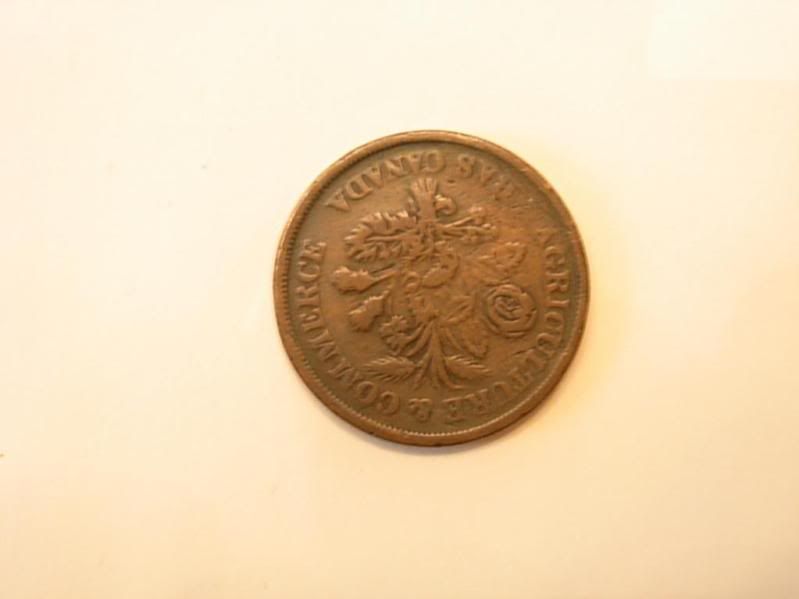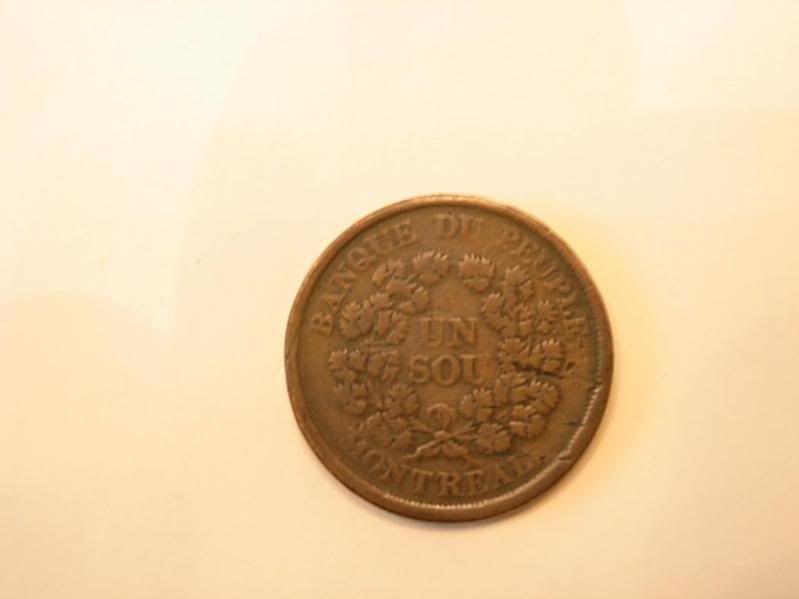1837/1838 Canada Bank Tokens...info needed
I recently found an Banque du Peuple token that I believe dates to 1837 or 1838. The actual one I found is pretty worn and hard to see the details, but I found a picture of the design online. I would like to give the actual piece to the owner of the property where I found it, but would like to give him some info with it as well.
I found one coin forum that states this:
What you have is a Canadian Colonial Token. Before Great Britain allowed Canada to mint their own coinage, the only coins that they had for circulation were US and foreign (usually Mexican, Spanish, French and Brit) mintages. To allow for commerce, banks and private mints struck penny and halfpenny tokens and they were readily used on both sides of the border back then. "Sou" is the denomination (in French). "Bas Canada" is Lower Canada (usually Montreal and environs) to distinguish it from Upper Canada (Ontario) as they were called at the time. Lower Canada was almost entirely French, while Upper was British or American/European.
Is there any additional info you can provide about this than the above? Now, there was a rebellion in 1837/1838... is the minting of this related to that? Did these really circulate here in the U.S.?
Thanks for any help you can provide!


I found one coin forum that states this:
What you have is a Canadian Colonial Token. Before Great Britain allowed Canada to mint their own coinage, the only coins that they had for circulation were US and foreign (usually Mexican, Spanish, French and Brit) mintages. To allow for commerce, banks and private mints struck penny and halfpenny tokens and they were readily used on both sides of the border back then. "Sou" is the denomination (in French). "Bas Canada" is Lower Canada (usually Montreal and environs) to distinguish it from Upper Canada (Ontario) as they were called at the time. Lower Canada was almost entirely French, while Upper was British or American/European.
Is there any additional info you can provide about this than the above? Now, there was a rebellion in 1837/1838... is the minting of this related to that? Did these really circulate here in the U.S.?
Thanks for any help you can provide!


0
Comments
Did it circulate in USA? Maybe along the New England border but unlikely because the US had been striking copper cents and half cents for 40 years. There was a steady migration of French Canadians into New England to work in the mills after the Civil War thru about 1910. (My grandparents arrived between 1900 and 1905.)
This token is the 2nd issue of what has become known as the "Bouquet Sou(s)" issues. More info on varieties can be found in The Cahrlton Catalogue of Canadian Colonial Tokens 7th edition, Lower Canada section.
Life member #369 of the Royal Canadian Numismatic Association
Member of Canadian Association of Token Collectors
Collector of:
Canadian coins and pre-confederation tokens
Darkside proof/mint sets dated 1960
My Ebay
As an aside, once England authorized Canada to mint their own coins (actually done at the Royal Mint in London, but paid for by Canada full price), Canada adopted coinage that coincided with US denominations, not British, because of the amount of trade and population shifts between the 2 countries. In 1858, the Canadian design was created for their cents through 20 cent pieces. They decided to make the cent exactly the diameter of the old Brit half penny, but made it 1/3 thinner to save on costs and made 100 of them equal in weight to one Brit or US pound. It was a wonderful idea to be able to use them as a balance scale for goods, but people wouldn't accept the new, thin planchets .. they were used to the tokens that had circulated for 50 years. The next mintage of Caandian Cents after 1858 & 1859 (10 million total for the 2 years) was in 1876 and they reverted back to planchets exactly the same diameter and thickness of the old half penny tokens & Brit circulating coinage.
For some inexplicable reason, despite my not being a huge collector of Canadian coins, I've always wanted a "bouquet sou" in Red UNC.